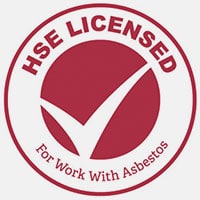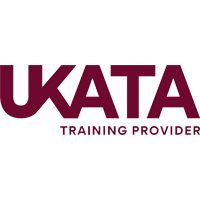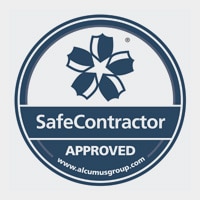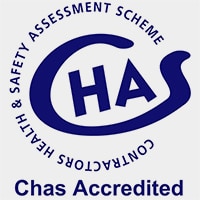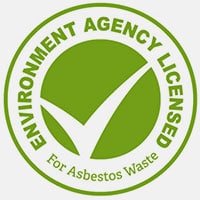Direct Asbestos Law
In all cases no matter what obligations or duties fall to each individual, group or organisation the need to know the location, type and condition of asbestos containing materials is paramount to ensure effective compliance. In order to locate identify and assess asbestos containing materials an asbestos survey of some type will be required.
Due to the overwhelming number of Acts, Regulations, Approved Codes of Practice and Guidance Notes which can refer, directly or indirectly to asbestos, the following pages have been divided into two sections:
- Section 1: Overview of direct asbestos Regulations, Approved Codes of Practice and Guidance notes.
- Section 2: Overview of main Acts and Regulations which are indirectly asbestos related.
Direct Asbestos Regulations, Approved Codes of Practice and Guidance Notes
What are Acts, Regulations, Approved Codes of Practice and Guidance Notes?
The legislation hierarchy is as follows:
1) An Act of Parliament
An Act of parliament is a law enacted as primary legislation. A draft piece of legislation is called a bill, when this is passed by parliament it becomes an Act and part of statute law.
2) Regulations
Regulations are a form of secondary law or statutory instruments which are used to implement an Act or primary piece of legislation appropriately.
3) Approved Code of Practice
Approved codes of practice are recommended means of compliance with the requirement of the act and regulations, and have been developed after consultation with the industry or industries concerned.
A code of practice applies to anyone who has a duty of care in the circumstances described in the code – which may include employers, employees, the self-employed, principals to contracts, owners of buildings or plant, and so on .An approved code does not necessarily contain the only acceptable ways of achieving the standard required by the Act. But, in most cases, compliance will meet the requirements of the Act, in relation to the subject matter of the code.
The code has special legal status. If you are prosecuted for breach of health and safety law, and it is proved that you did not follow the relevant provisions of the code, you will need to show that you have complied with law in some other way or a court will find you at fault.
4) Guidance Notes
Guidance notes are not compulsory and you are free to take other action. But if you do follow the guidance you will normally be doing enough to comply with the law. Health and safety inspectors seek to secure compliance with the law and may refer to guidance as illustrating good practice.
Main Regulations – The Control of Asbestos Regulations 2012
The Control of Asbestos Regulations 2012 impose a duty to manage asbestos in premises and they also require employers to:
- Undertake risk assessments before commencing work which exposes or is liable to expose, employees to asbestos.
- Produce a plan of work detailing how the work is to be carried out and indicate any asbestos related issues and solutions.
- Either prevent exposure to asbestos or reduce it to as low a level as is reasonably practicable.
Regulation 4 of The Control of Asbestos Regulations 2012 requires all duty holders under the regulations to manage asbestos in non domestic premises.
Note: Although the regulations refer to non-domestic premises, where contractors are undertaking work within a domestic property the regulations apply.
Who has a duty to manage asbestos?
Under Regulation 4 of The Control of Asbestos Regulations 2012 the “duty holder” means
- every person who has by virtue of a contract or tenancy, an obligation of any extent in relation to the maintenance or repair of non domestic premises or any means of access thereto or egress therefrom; or
- in relation to any part of non domestic premises where there is no such contract or tenancy, every person who has to any extent control of that part of those non domestic premises or any means of access thereto or egress therefrom,
and where there is more than one such duty holder, the relative contribution to be made by each such person in complying with the requirements of this regulation will be determined by the nature and extent of the maintenance and repair obligation owed by that person.
Download your copy of The Control of Asbestos Regulations 2012 in PDF format.
Additional Asbestos Guidance Documents
In addition to the current guidance documents, there are an additional 10 Approved Codes of Practice and Guidance Documents which directly apply to Asbestos. They are:
L143 Approved Code of Practice and Guidance.
Work with materials containing asbestos.
Control of Asbestos Regulations 2006
The Control of Asbestos Regulations 2006 were replaced by The Control of Asbestos Regulations 2012 in April 2012. The new asbestos regulations were introduced as a result of the European Commission issuing a “reasoned opinion.” The European Commission concluded that the UK government had not fully implemented a directive which covers the protection of workers from the risks of exposure to asbestos at work.
The new Approved Code of Practice for The Control of Asbestos Regulations 2012 has not been issued by the Health and Safety Executive, however limited information is available via the HSE website.
Therefore the existing Approved Code of Practice (ACOP) can be utilised for guidance purposes. This document provides guidance in particular to work on, or which disturbs or is liable to disturb, materials containing asbestos, asbestos sampling and laboratory analysis.
An additional ACOP entitled ‘The Management of Asbestos in non-domestic premises’ is aimed at those who have duties to manage the risk from asbestos in non-domestic premis
Download your copy of the L143 in PDF format.
L127 Approved Code of Practice and Guidance.
The management of asbestos in non-domestic premises.
Regulation 4, CAR 2012
This Approved Code of Practice provides practical guidance on regulation 4 of the Control of Asbestos Regulations 2012. This guidance was produced for The Control of Asbestos Regulation 2006, however all requirements have been maintained under The Control of Asbestos Regulation 2012.
It re-issues substantively unchanged, the guidance in an earlier Code of Practice (L127) which this code replaces.
In particular the L127 code of practice applies to those who have responsibilities for the maintenance and repair of non-domestic premises where asbestos-containing materials are or are likely to be present in those premises
Download your copy of the L127 in PDF format.
HSG 227 Health and Safety Guidance
A comprehensive guide to managing asbestos in premises.
First edition, published 2002
This guidance is aimed at people who have a duty to manage the risks from asbestos-containing materials in premises.
Examples of which include; building owners, tenants and anyone else who has any legal responsibilities for workplaces.
The guidance expands on that given in the free leaflet ‘Managing asbestos in premises.
Download your copy of the HSG 227 in PDF format.
HSG264 Asbestos: The Survey Guide
This heavily illustrated publication replaces and expands on MDHS100, Surveying, sampling and assessment of asbestos-containing materials.
It is aimed at people carrying out asbestos surveys and people with specific responsibilities for managing asbestos in non-domestic premises under the Control of Asbestos Regulations 2006.
The book covers competence and quality assurance and surveys, including: survey planning, carrying out surveys, the survey report and the dutyholder’s use of the survey information. It includes extensive appendices and references.
Download your copy of the HSG 264 in PDF format.
HSG 248 Health and Safety Guidance
Asbestos: The analysts’ guide for sampling, analysis and clearance procedures.
This book provides advice and guidance for analysts involved in licensed asbestos removal and the sampling of asbestos-containing materials. This guidance is aimed at a technical audience, e.g. asbestos analysts, asbestos consultants, occupational hygienists, safety officers etc. It will also be useful to asbestos removal contractors and supervisors, employers, building owners and people with responsibility for managing properties and estates.
Training and qualifications; Sampling and analysis of materials for the presence of asbestos; Sampling and analysis of airborne fibre concentrations; Site assessment for reoccupation; Supervisory work carried out by analysts; Personal protective equipment and Decontamination procedures.
Download your copy of the HSG 248 in PDF format.
HSG 247 Health and Safety Guidance
Asbestos: The licensed contractors’ guide.
This publication is aimed at businesses holding a licence to work with asbestos, either repairing or removing asbestos-containing materials (ACMs), supervising such work, holding an ancillary licence or providing training on asbestos. Employers who carry out work with asbestos insulation, asbestos coating and asbestos insulating board using their own employees on their own premises, who are exempted from the requirement to hold a licence, also need this guidance.
It may be useful to people awarding contracts for such work or who have other asbestos management duties. The guidance replaces most earlier HSE guidance on licensed asbestos removal work. The guidance is split into eight chapters, covering in detail, different aspects of licensed work with ACMs. It provides an overview of asbestos and its health effects, the law and how to work safely with asbestos.
Download your copy of the HSG 247 in PDF format.
HSG 189/2 Health and Safety Guidance
Working with asbestos cement.
Provides guidance on the necessary precautions to prevent exposure to asbestos fibres, or where this is not reasonably practicable, to reduce exposure to asbestos fibres. Aimed at anyone who is liable to control or carry out work with asbestos cement including employers, contract managers, site agents, self-employed builders and contractors involved in construction, maintenance, refurbishment and demolition work.
Contents: Why is asbestos dangerous? What is asbestos cement? What has asbestos cement been used for? Legislative requirements; Substitutes for asbestos cement; How to identify asbestos cement; How to work safely with asbestos cement; Work methods; Cleaning weathered asbestos cement; The behaviour of asbestos cement in fires; Decontamination and cleaning; Waste disposal; Air monitoring; RPE for work with asbestos cement; Protective clothing for work with asbestos cement; Cleaning and hygiene facilities.
Download your copy of the HSG 189/2 in PDF format.
HSG 210 Health and Safety Guidance
Asbestos essentials.
A task manual for building, maintenance and allied trades on non-licensed asbestos work
This revised task manual contains guidance and task sheets on working safely with asbestos.
The manual is aimed at all workers who may come into contact with asbestos, including electricians, builders, plumbers, carpenters etc.
It will be useful to employees, the self-employed and managers.
Contents: Introduction; Equipment and Method sheets; Task sheets.
Download your copy of the HSG 210 in PDF format.
HSG 213 Health and Safety Guidance
Comprehensive guidance on working with asbestos in the building maintenance and allied trades.
This publication is aimed at employers, contract managers, site agents, safety representatives, and self-employed contractors involved in maintaining buildings and associated plant.
Maintenance workers may come across asbestos in the course of their work.
It gives advice on what those responsible must do to ensure the health and safety of maintenance workers who may encounter asbestos.
Download your copy of the HSG 213 in PDF format.
MS13 Guidance
Asbestos medical guidance.
This publication is aimed at appointed doctors and other health professionals with responsibility for and/or an interest in medical surveillance of employees exposed to asbestos about: action levels, control limits, health effects etc.
This guidance is issued by the Health and Safety Executive. Following the guidance is not compulsory and you are free to take other action. But if you do follow the guidance you will normally be doing enough to comply with the law.
Health and safety inspectors seek to secure compliance with the law and may refer to this guidance as illustrating good practice.
Download your copy of the MS13 in PDF format.

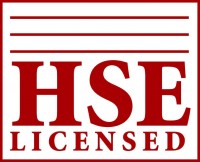
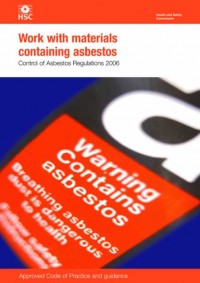
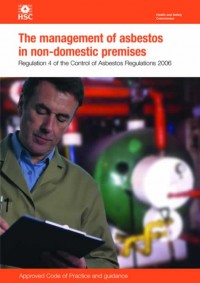
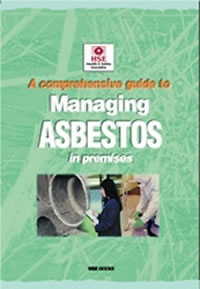
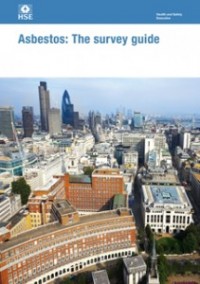
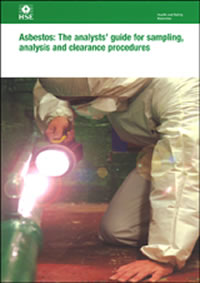
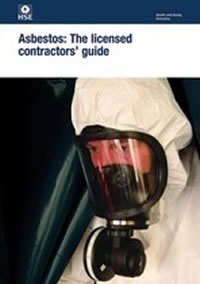
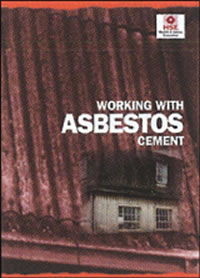
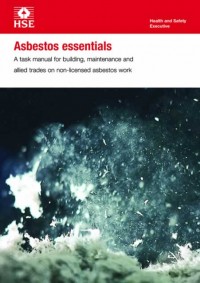
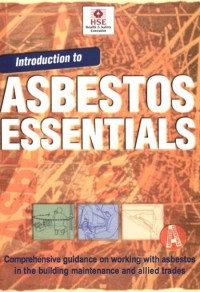
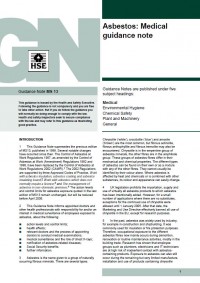
 "There are lots of guarantees around. Here's my simple guarantee: If there's something wrong, we'll fix it."
Jess Scott - CEO
"There are lots of guarantees around. Here's my simple guarantee: If there's something wrong, we'll fix it."
Jess Scott - CEO